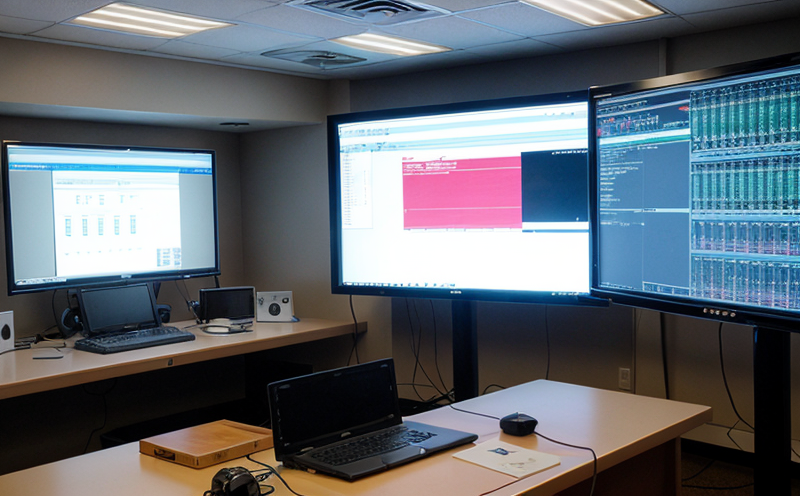EN 50125-1 Environmental Stress Testing of Signaling Components
EN 50125-1 is a European standard that specifies the environmental stress testing requirements for signaling and communication equipment used in railway systems. The primary purpose of this testing is to ensure that signal components can withstand harsh operating conditions, thereby enhancing system reliability and safety in critical transportation infrastructure.
The standard covers various types of environmental stresses including temperature, humidity, electromagnetic interference (EMI), mechanical shock, vibration, and dust ingress. These tests are crucial for railway applications where equipment must function reliably under extreme conditions such as high temperatures during summer, low temperatures during winter, and the presence of moisture or salt spray in coastal areas.
Signaling systems play a vital role in ensuring safe and efficient train operations. Any failure in these systems can lead to accidents, delays, and costly repairs. By adhering to EN 50125-1, manufacturers ensure that their products meet stringent quality standards, which ultimately leads to safer rail transportation.
The testing process involves subjecting the signaling components to controlled environmental conditions designed to mimic real-world scenarios. This includes placing the equipment in chambers where temperature and humidity levels are precisely regulated over extended periods. Additionally, electromagnetic interference tests simulate the presence of radiofrequency fields that can interfere with signal transmission.
Once the tests are completed, detailed reports are generated documenting any performance issues or failures observed during the testing process. These reports serve as important tools for manufacturers to identify areas needing improvement and implement corrective measures before product release.
- Customer Impact: Compliance with EN 50125-1 ensures that signaling equipment operates safely and reliably under all expected conditions, reducing the risk of system failures during critical moments.
- Safety Assurance: By meeting these rigorous environmental stress testing requirements, railway operators can trust that their systems will perform consistently even in challenging environments.
- Regulatory Compliance: Adherence to international standards like EN 50125-1 helps businesses avoid costly penalties and sanctions associated with non-compliance.
In summary, EN 50125-1 environmental stress testing is essential for ensuring the robustness and longevity of signaling components in railway systems. It provides peace of mind to both manufacturers and operators by guaranteeing that equipment will perform reliably under extreme conditions, thus contributing to safer and more efficient rail transportation.
Why It Matters
The importance of EN 50125-1 environmental stress testing cannot be overstated, especially given the critical role played by signaling systems in railway operations. Any malfunction or failure during operation could result in serious accidents, significant financial losses, and potential legal liabilities.
Railways are complex networks where even minor disruptions can have far-reaching consequences. Ensuring that all components of the signaling system meet stringent environmental stress testing requirements helps mitigate these risks by confirming their resilience against various adverse conditions.
From a broader perspective, compliance with international standards like EN 50125-1 fosters trust among stakeholders such as regulators, operators, and passengers. It demonstrates a commitment to excellence in product development and quality assurance practices which ultimately contributes to the overall safety culture within the industry.
In essence, investing time and resources into proper environmental stress testing not only protects individual organizations but also supports the broader goal of enhancing public confidence in railway infrastructure worldwide.
Benefits
The benefits of adhering to EN 50125-1 go beyond mere compliance; they offer substantial advantages that contribute directly to improved operational efficiency and safety. Here are some key advantages:
- Enhanced Reliability: Rigorous testing ensures that signaling components operate reliably under all possible environmental conditions, reducing the likelihood of unexpected failures.
- Increased Safety: By ensuring robust performance in challenging environments, these tests help prevent accidents and enhance overall safety standards within railway systems.
- Cost Savings: Early identification of potential issues through comprehensive testing can save significant costs associated with field repairs or replacements.
- Regulatory Compliance: Meeting international standards like EN 50125-1 helps avoid penalties and sanctions from regulatory bodies, protecting the organization's reputation and financial stability.
- Innovation Opportunities: The structured testing process encourages continuous improvement in product design and functionality, fostering innovation within the industry.
These benefits underscore why implementing EN 50125-1 environmental stress testing is not just a regulatory requirement but also an integral part of maintaining high standards of quality and safety in railway signaling systems.





